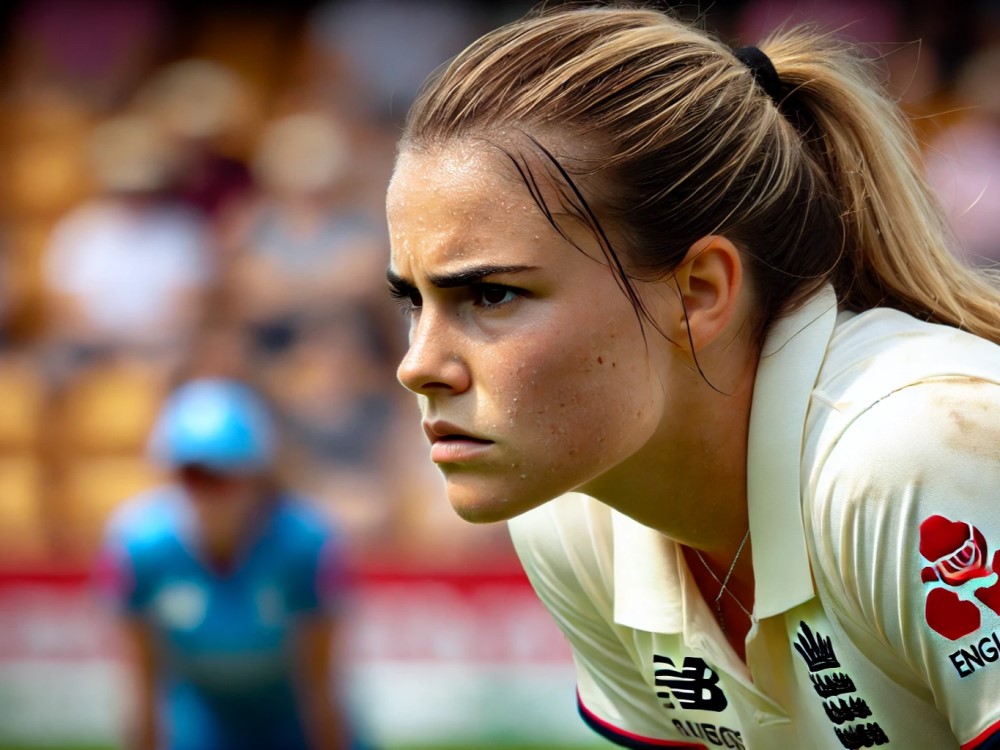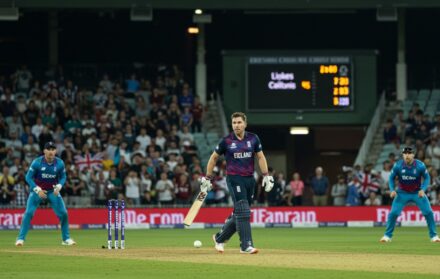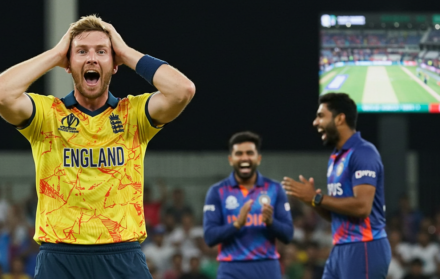
The Growth and Development of Women’s Cricket
The growth and development of women’s cricket have been remarkable, marked by significant achievements and records in women’s cricket and an increasing global presence. What was once a sport dominated by men has gradually transformed into a field where women are making their mark, setting records, and inspiring new generations of athletes. This transformation did not come without challenges, as female cricketers have faced numerous obstacles, from limited opportunities to systemic inequalities. The journey of women in cricket is not just about sporting excellence but also about breaking barriers and advocating for gender equality.
The evolution of women’s cricket has brought about a broader societal impact. From promoting gender equality to challenging societal norms, the sport has played a crucial role in advancing the cause of women in various spheres of life. The ongoing comparison between men’s and women’s cricket often highlights the disparities in opportunities, but it also underscores the progress that has been made. The influence of women’s cricket on society is profound, as it not only provides a platform for female athletes to showcase their talent but also serves as a catalyst for social change.
Women’s cricket has also opened doors to new opportunities, including sponsorships and media coverage. Although there is still a long way to go in achieving parity with men’s cricket, the increasing visibility of women’s matches and the rise in sponsorship deals are positive signs of progress. The fight against sexism in the sport continues, as does the push for equal pay and recognition for female cricketers. The media coverage gap between men’s and women’s cricket remains a significant issue, but efforts are being made to bridge this divide.
The participation of women’s cricket in prestigious events like the Olympic Games and international tournaments has further solidified its place on the global stage. These developments reflect the growing popularity and acceptance of the sport, as well as the inclusion of diverse cultures and backgrounds within the women’s cricket community. The history and evolution of women’s cricket demonstrate the resilience and determination of female athletes who have fought for their place in the sport.
As we look to the future, the growth and development of women’s cricket will continue to be shaped by the ongoing efforts to address these challenges and create a more equitable playing field. The impact of women’s cricket on society, from promoting gender equality to fostering a sense of inclusion, cannot be overstated. As the sport continues to evolve, it will undoubtedly inspire future generations of female athletes to pursue their dreams and make their mark in the world of cricket.
The Early Beginnings of Women’s Cricket: Pioneering the Path

Women’s cricket has a long and storied history that dates back to the 18th century, although its journey to becoming a globally recognized sport has been a challenging one. The first recorded women’s cricket match took place in 1745 in Surrey, England, where two teams from local villages competed. This match marked the beginning of women’s involvement in a sport that, at the time, was dominated by men. However, it wasn’t until the late 19th and early 20th centuries that women’s cricket began to gain more structured organization and recognition.
In the 1880s, the formation of women’s cricket clubs in England marked a significant step forward. The White Heather Club, established in 1887, was one of the first formal women’s cricket clubs and played a crucial role in promoting the sport. This period also saw the first international women’s cricket matches, with teams from England and Australia competing in what would become a historic rivalry. Despite these early advancements, women’s cricket remained largely underfunded and received little media attention compared to its male counterpart.
The early development of women’s cricket was also influenced by the social norms of the time. Women who played cricket were often viewed as unconventional, and the sport was seen as unsuitable for women by many. Despite these challenges, the women who played cricket in these early years laid the groundwork for future generations. Their passion for the game and determination to compete at a high level ensured that women’s cricket continued to grow, even if progress was slow.
The early beginnings of women’s cricket were marked by perseverance and a pioneering spirit. The women who played in the 18th and 19th centuries faced significant challenges, but their efforts established a foundation for the future development of the sport. The growth of women’s cricket in these early years was a testament to the dedication of those who loved the game and were determined to see it flourish, despite societal barriers and limited resources.
The Evolution of Women’s Cricket: From Amateur to Professional
The evolution of women’s cricket from an amateur pastime to a professional sport has been a gradual process, characterized by significant milestones that have shaped the game as it is known today. In the early 20th century, women’s cricket began to gain more formal recognition, with the establishment of national organizations and the introduction of international competitions. This period was crucial in transforming women’s cricket from a recreational activity into a more organized and competitive sport.
One of the most significant developments in the evolution of women’s cricket was the formation of the Women’s Cricket Association (WCA) in England in 1926. The WCA played a pivotal role in promoting the sport, organizing domestic competitions, and facilitating international tours. The association’s efforts culminated in the first-ever Women’s Test match between England and Australia in 1934, followed by a series between England and New Zealand in 1935. These matches marked the beginning of international women’s cricket and laid the groundwork for future growth.
The post-war era saw further advancements in women’s cricket, with more countries establishing national teams and participating in international competitions. However, the sport remained largely amateur, with little financial support or media coverage. Women cricketers often had to balance their passion for the game with full-time jobs and other responsibilities. Despite these challenges, the 1970s brought about a new wave of progress, with the inaugural Women’s Cricket World Cup held in 1973, two years before the men’s equivalent. This tournament, won by England, was a major milestone in the history of women’s cricket and highlighted the growing popularity of the sport.
The late 20th and early 21st centuries have seen women’s cricket continue to evolve, with increased investment, sponsorship, and media attention helping to professionalize the sport. The introduction of central contracts for female cricketers in countries like England, Australia, and India has allowed players to focus on their careers full-time, leading to higher standards of play and more competitive international fixtures. The growth of domestic T20 leagues, such as the Women’s Big Bash League (WBBL) in Australia, has further elevated the profile of women’s cricket, providing players with more opportunities to showcase their talents on a global stage.
The evolution of women’s cricket from an amateur pastime to a professional sport has been marked by significant milestones and continued progress. The establishment of national organizations, the introduction of international competitions, and the increasing professionalization of the game have all contributed to the development of women’s cricket. Today, the sport is more competitive and recognized than ever before, thanks to the dedication of the players, administrators, and supporters who have worked tirelessly to promote and grow the game.
The Impact of Major Tournaments on Women’s Cricket

Major tournaments have played a crucial role in the growth and development of women’s cricket, providing a platform for the sport to reach a wider audience and inspiring the next generation of female cricketers. These tournaments have not only showcased the talents of women cricketers but also helped to elevate the status of the sport, leading to increased investment, media coverage, and fan engagement.
The Women’s Cricket World Cup is perhaps the most significant tournament in the history of women’s cricket. First held in 1973, the World Cup has become the pinnacle of the sport, bringing together the best teams from around the globe to compete for the title. The success of the World Cup has been instrumental in raising the profile of women’s cricket, with each edition drawing more attention and larger audiences. The 2017 World Cup, held in England, was a watershed moment for the sport, with over 180 million viewers tuning in to watch the final between England and India. The thrilling match, held at Lord’s Cricket Ground, ended with England claiming a dramatic nine-run victory, and the tournament was widely praised for its high-quality cricket and competitive spirit.
In addition to the World Cup, other major tournaments like the ICC Women’s T20 World Cup have also contributed significantly to the growth of women’s cricket. The T20 format, with its fast-paced and exciting nature, has been particularly successful in attracting new fans to the sport. The 2020 edition of the Women’s T20 World Cup, held in Australia, set new records for attendance and viewership, with the final at the Melbourne Cricket Ground drawing a crowd of over 86,000 spectators. The tournament’s success highlighted the growing popularity of women’s cricket and demonstrated that the sport has the potential to captivate global audiences on the same scale as men’s cricket.
The introduction of domestic T20 leagues, such as the Women’s Big Bash League (WBBL) in Australia and the Kia Super League (KSL) in England, has further enhanced the impact of major tournaments on women’s cricket. These leagues provide a platform for domestic and international players to compete at a high level and have been crucial in developing and nurturing young talent. The success of these leagues has also encouraged other countries to establish their own women’s T20 competitions, further expanding the opportunities available to female cricketers.
Major tournaments have had a profound impact on the growth and development of women’s cricket. The Women’s Cricket World Cup, ICC Women’s T20 World Cup, and domestic T20 leagues have all played a key role in elevating the status of the sport, attracting new fans, and providing a platform for the best players in the world to showcase their skills. These tournaments have not only contributed to the professionalization of women’s cricket but have also inspired a new generation of female cricketers to take up the sport and dream of representing their countries on the global stage.
The Role of Media and Sponsorship in Women’s Cricket
The growth of women’s cricket has been significantly influenced by the increased media coverage and sponsorship opportunities that have emerged in recent years. These factors have played a vital role in raising the profile of the sport, attracting new fans, and providing financial support to help professionalize the game. The role of media and sponsorship in women’s cricket cannot be overstated, as they have been crucial in driving the sport’s development and ensuring its continued success.
In the past, media coverage of women’s cricket was limited, with few matches televised and little attention given to the sport by mainstream media outlets. This lack of visibility made it difficult for women’s cricket to attract new fans and secure sponsorship deals, which in turn limited the resources available to grow the sport. However, the landscape has changed dramatically in recent years, with more and more matches being broadcast on television and streamed online. Major tournaments like the Women’s Cricket World Cup and the ICC Women’s T20 World Cup have received extensive coverage, helping to bring the sport to a global audience.
Social media has also played a crucial role in the promotion of women’s cricket. Platforms like Twitter, Instagram, and Facebook have allowed players, teams, and governing bodies to connect directly with fans, share content, and build a following. The use of social media has helped to create a sense of community around women’s cricket, with fans able to engage with the sport in real-time, share their experiences, and support their favorite players. This increased visibility has been instrumental in raising the profile of women’s cricket and attracting new fans, particularly among younger audiences.
Sponsorship has also been a key driver of the growth of women’s cricket. In the past, women’s cricket struggled to attract the same level of sponsorship as men’s cricket, with limited financial support available for players, teams, and tournaments. However, as the sport has grown in popularity and visibility, more companies have recognized the value of sponsoring women’s cricket. Major brands like Nike, MRF, and Pepsi have signed sponsorship deals with women’s cricket teams and tournaments, providing much-needed financial support and helping to elevate the status of the sport.
The introduction of central contracts for female cricketers in countries like England, Australia, and India has been made possible in part by increased sponsorship revenue. These contracts have allowed players to focus on their cricket careers full-time, leading to higher standards of play and more competitive international fixtures. Sponsorship deals have also enabled governing bodies to invest in grassroots development programs, facilities, and coaching, helping to nurture the next generation of female cricketers.
Media coverage and sponsorship have played a crucial role in the growth and development of women’s cricket. The increased visibility of the sport through television, social media, and sponsorship deals has helped to attract new fans, provide financial support, and professionalize the game. As women’s cricket continues to grow, the role of media and sponsorship will remain vital in ensuring the sport’s continued success and expansion.
The Future of Women’s Cricket: Challenges and Opportunities

The future of women’s cricket is filled with both challenges and opportunities as the sport continues to grow and evolve on the global stage. While significant progress has been made in recent years, there are still hurdles to overcome in order to achieve full parity with men’s cricket and to ensure the long-term sustainability of the sport. At the same time, there are numerous opportunities to further expand the reach of women’s cricket, attract new fans, and continue to raise the standard of play.
One of the main challenges facing women’s cricket is the need for greater investment. While there has been increased financial support in recent years, particularly from sponsorships and central contracts, there is still a significant gap between the funding available for men’s and women’s cricket. This disparity can impact everything from player salaries and resources to the quality of facilities and coaching available to female cricketers. To ensure the continued growth of women’s cricket, it is essential that governing bodies, sponsors, and broadcasters continue to invest in the sport at all levels, from grassroots development to elite competition.
Another challenge is the lack of consistent international fixtures for women’s cricket. While major tournaments like the Women’s Cricket World Cup and ICC Women’s T20 World Cup provide a platform for international competition, there are fewer opportunities for women’s teams to play regular bilateral series compared to their male counterparts. This inconsistency can make it difficult for teams to build momentum and for fans to follow the sport year-round. To address this, there is a need for more regular and structured international fixtures, including more Test matches for women’s teams, which have been historically rare.
Despite these challenges, there are also numerous opportunities for the future of women’s cricket. The continued expansion of domestic T20 leagues presents a significant opportunity to attract new fans and develop young talent. Leagues like the Women’s Big Bash League (WBBL) in Australia and The Hundred in England have already had a major impact on the sport, and there is potential for similar leagues to be established in other cricketing nations. These leagues not only provide valuable playing opportunities for female cricketers but also help to raise the profile of the sport and attract new audiences.
The growing globalization of women’s cricket is another opportunity. As more countries invest in their women’s teams and develop domestic competitions, the sport has the potential to reach new markets and grow its global fan base. Countries like Thailand, which qualified for the ICC Women’s T20 World Cup for the first time in 2020, are examples of how the sport is expanding beyond traditional cricketing nations. By continuing to support emerging teams and providing opportunities for them to compete at the highest level, the ICC can help to ensure that women’s cricket becomes a truly global sport.
In conclusion, the future of women’s cricket is filled with both challenges and opportunities. While there are still hurdles to overcome, particularly in terms of investment and consistent international fixtures, the sport has never been in a stronger position to grow and thrive. By continuing to invest in the sport, expand domestic leagues, and support the globalization of women’s cricket, there is a bright future ahead for the game. As the sport continues to evolve, women’s cricket has the potential to inspire and engage millions of fans around the world, solidifying its place on the global sporting stage.
Conclusion: Celebrating the Growth and Development of Women’s Cricket

The growth and development of women’s cricket over the past century have been remarkable, transforming the sport from a niche pastime into a globally recognized and respected game. From the pioneering days of the 18th century to the professional era of the 21st century, women’s cricket has faced numerous challenges but has continued to progress thanks to the dedication and passion of players, administrators, and fans.
The evolution of women’s cricket has been marked by significant milestones, including the establishment of national organizations, the introduction of major tournaments like the Women’s Cricket World Cup, and the increased visibility provided by media coverage and sponsorship. These developments have helped to raise the profile of the sport, attract new fans, and provide financial support that has allowed women’s cricket to thrive.
Looking ahead, the future of women’s cricket is filled with both challenges and opportunities. Continued investment, the expansion of domestic leagues, and the globalization of the sport are key areas that will drive the growth of women’s cricket in the coming years. By addressing the challenges and seizing the opportunities, the sport can continue to grow and reach new heights, inspiring the next generation of female cricketers and fans.
In conclusion, the growth and development of women’s cricket are worth celebrating. The progress made so far is a testament to the resilience and determination of those who have worked tirelessly to promote and grow the game. As women’s cricket continues to evolve, it has the potential to become one of the most popular and widely played sports in the world, leaving a lasting legacy for future generations.





